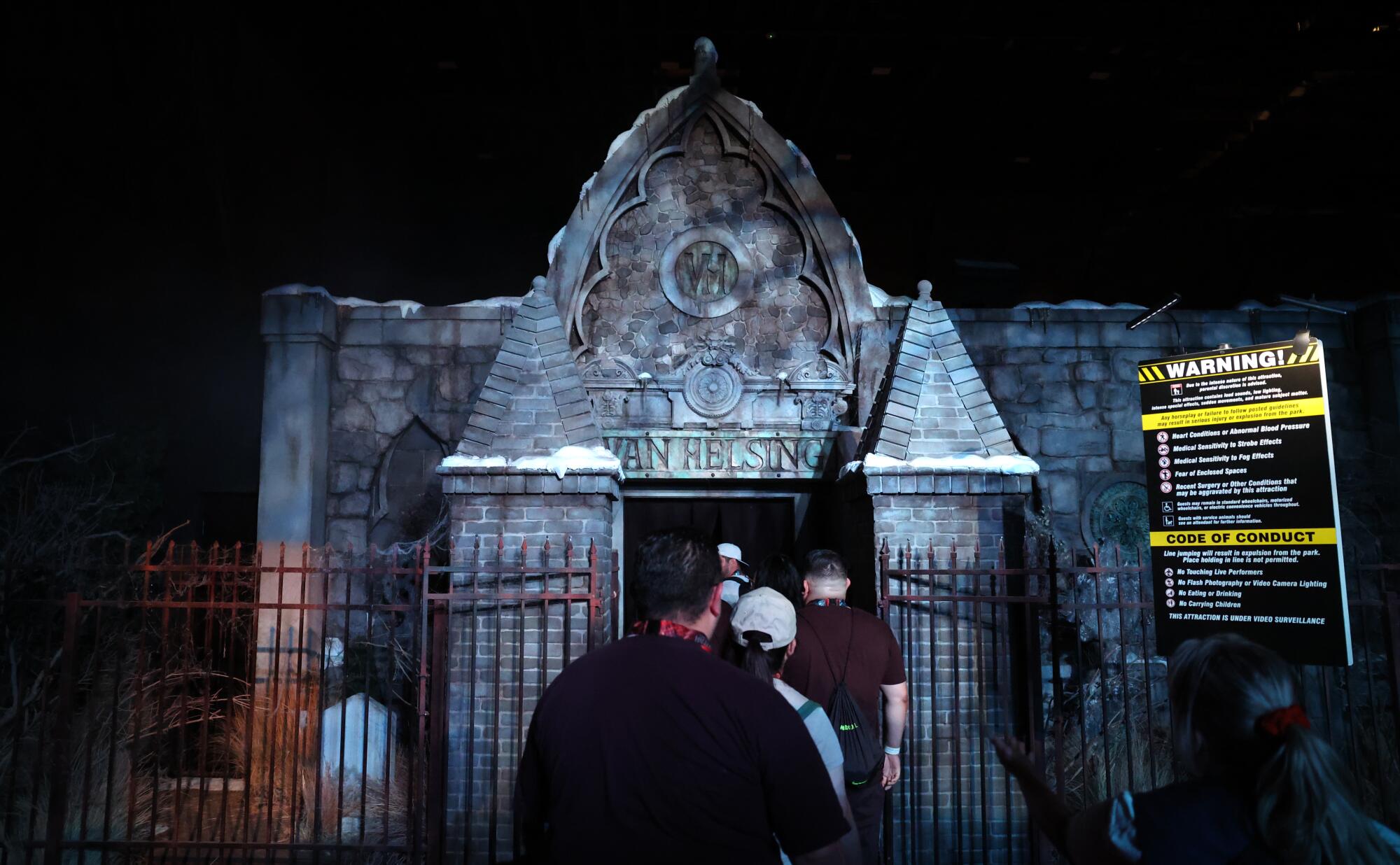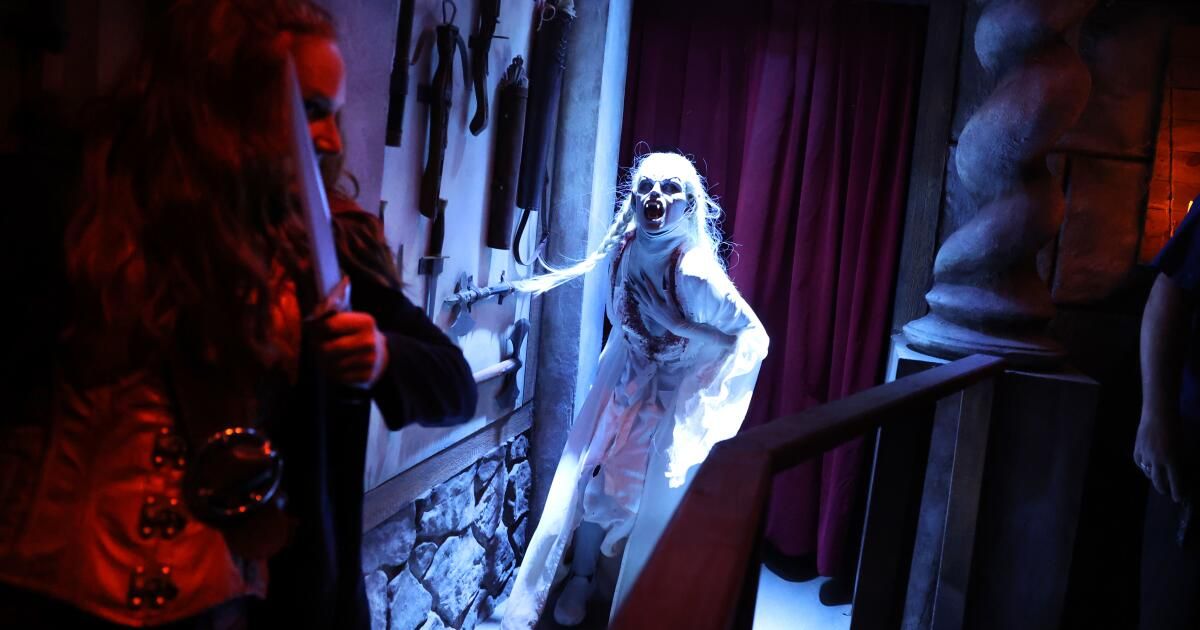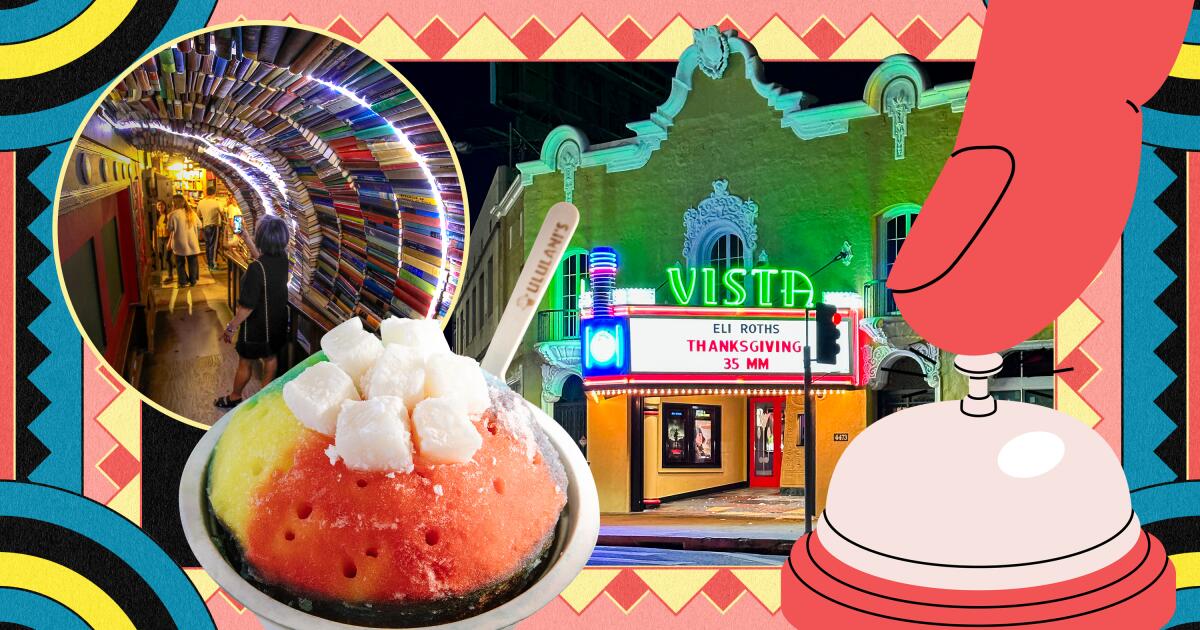Like all major theme park horror events, Halloween Horror Nights at Universal Studios Hollywood is all about scaring its guests. But Universal's lead architect this year wanted to pose a different question: Is it possible to create a haunted maze that's a tragedy?
It’s a challenge, but John Murdy has approached the haunted house as a complex piece of theater since 2006, when he began overseeing the event that would eventually become the annual staple that is Halloween Horror Nights. For one of this year’s Universal Monsters-themed offerings, Murdy wanted to not only refresh the brand (the horror ride focuses solely on female characters, reorienting a franchise that had long been male-centric), but do so with a story he hopes will leave attendees a little grumpy.
“I always think of our Universal Monster movies as Shakespearean tragedies,” Murdy says. “So I thought, ‘I want to do that this time.’”
The resulting maze — “Universal Monsters: Eternal Bloodlines” — focuses on characters who have had little to no screen time in Universal’s films. Instead, it aims to liven up Universal Monsters narratives by spotlighting villains and heroines like Saskia Van Helsing, daughter of Dracula hunter Abraham Van Helsing; the Bride of Frankenstein; and Dracula’s own vampire daughter, Countess Marya Zaleska. Just don’t get too attached to some of them.
The reimagining of Universal Monsters comes amid a cultural climate that in recent years has sought to reexamine popular narratives, specifically as they relate to issues of diversity and inclusion. Witness Disney’s recent attempts to broaden the reach of its Marvel and Star Wars franchises, or Nintendo’s transformation this month of its popular damsel in distress, Princess Zelda, into a heroine.
Murdy believes Universal's monsters are ripe for such a remake. And this is happening across the company, especially when it comes to Universal's theme parks. Opening next year in Florida is the sprawling Epic Universe, which contains a monster-focused section with a thrill ride based on the experiments of Dr. Victoria Frankenstein.
“When you look at the Universal monsters and you look at the hierarchy of the characters, it’s Dracula, the Wolf Man, the Mummy, Frankenstein, the Phantom of the Opera — all men,” Murdy says. “And then there’s the Bride of Frankenstein. The Bride of Frankenstein appears in ‘Bride of Frankenstein’ for about five minutes. You don’t see her until the end of the movie, and then the Frankenstein Monster flips the switch and blows up the castle and she disappears from cinema history.”
“Universal Monsters: Eternal Bloodlines” aims to give these lesser-known cinematic characters their rightful place. Murdy was encouraged by the popularity among fans of a 2021 haunted maze that served as a sequel to “Bride of Frankenstein.” Not only did it give him and his team the confidence to delve deeper into Universal Monsters lore, but it also made it clear that the horror world could benefit from a little more representation.
“I want to create powerful female characters,” Murdy says. “When the horror genre started, it was pretty male-centric. Even in the ’80s, it was Freddy, Jason, Leatherface, Michael Myers. That’s what we started out doing. It was that horror genre. But as time has gone on and the event has grown and evolved, we’ve kept an open mind about embracing all kinds of horror genres.”
A maze at Halloween Horror Nights is themed “A Quiet Place,” with actors guiding guests through a house to prevent an alien invasion.
(Wally Skalij / Los Angeles Times)
This year, Halloween Horror Nights includes mazes centered on franchises like “A Quiet Place” and “Ghostbusters: Frozen Empire,” the former an alien invasion story that the park invested in multiple animatronic figures for and the latter one that leans a bit more toward the comedic. Also featured once again is a maze inspired by the music of The Weeknd, a surreal trip into Hollywood nightlife.
But when it came to “Universal Monsters: Eternal Bloodlines,” Murdy, who is something of a horror historian (he’s eager to discuss how the maze is set on the same stage where 1931’s “Dracula” was filmed), had some personal goals.
“I love the idea of women being the protagonists,” Murdy says. “I have two daughters, and honestly, I probably own one of the largest collections of Universal Monsters paraphernalia in the world. It’s in my house here in Los Angeles, so ever since they were babies, they were in the monsters room. I have pictures of them kissing the Frankenstein busts, so they knew this was normal as little girls. Like me, they have a weird emotional attachment to them, and I want to create powerful female characters for my daughters.”
Halloween Horror Nights at Universal Studios
But Murdy doesn’t treat characters as precious, either. The challenge of a haunted maze is performance, meaning thousands of people must be able to witness it in one night. While the rooms are meticulously detailed — carved rocks, projections, trick weapons and filmed moments are interspersed with live actors — each participant only has about 10 seconds to take in the scene. Murdy admits that the subtle narratives he’s aiming for might go unnoticed by those simply walking through a haunted house looking for thrills and jump scares.
And “Universal Monsters: Eternal Bloodlines” is relatively ambitious. Scenes change locations quickly, and illustrated portraits are used as shorthand for transitions. The images also detail the alliance between Frankenstein’s bride and vampire hunter Saskia Van Helsing, who appears in the labyrinth as a kind of action heroine. Not every character gets a happy ending. Murdy decided that Van Helsing would fail in his mission when Dracula’s daughter takes her own life at the labyrinth’s climax.
Murdy admits that when it came time to kill off the story's protagonist, he asked his coworkers for their opinion. They were surprised, but in the end he decided to do it.
“That’s what these movies are to me: tragedies,” Murdy says. He then recalls the final lines of Universal’s 1941 film “The Wolf Man,” a final moment in which a character delivers a poem-like recitation about the end of suffering, a climax he describes as “one of the saddest scenes ever.”
“It’s sad,” he says. “I just wanted to inject that emotion into the story, which I don’t know if we’d quite achieved yet. That was the impetus. That emotion is inherent in all of our Universal Monsters movies, so I wanted to see if we could achieve it here. I’ve never seen anyone try to do that in a haunted house.”

The facade of “Universal Monsters: Eternal Bloodlines,” located on the same studio where 1931’s “Dracula” was filmed.
(Wally Skalij / Los Angeles Times)
After making it through the maze, I didn’t see anyone coming out crying. But that’s OK, too, as Murdy points out that horror fans know an ending isn’t really an ending, and lists numerous instances where characters seemingly came back from the dead, including the original “Frankenstein.” Staying true to horror canon was just as important as elevating lesser-known characters, even if not all of them make it out alive.
“My 11-year-old daughter is coming for the first time,” Murdy says. “She’s never asked me before, but she said, ‘I think I’m ready. ’ And I want her to see female representation.”
Perhaps the time has come for the era of Dracula's daughter.












